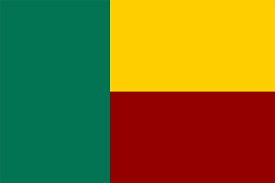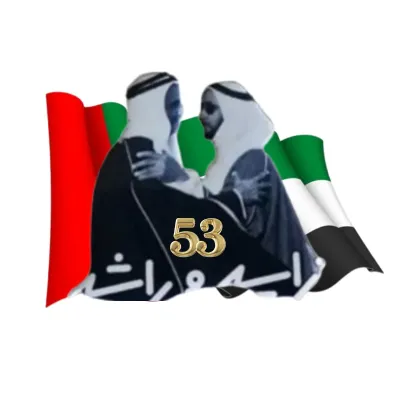Meaning of Colors of the Benin Flag
 What is the Meaning of the Colors of the Benin Flag?
What is the Meaning of the Colors of the Benin Flag?
Flags are not merely pieces of cloth fluttering in the wind; they are powerful symbols that represent the identity, values, and aspirations of nations. Among the myriad of flags adorning the globe, the Benin flag stands out with its distinctive combination of colors. In this exploration, we delve into the meaning behind each hue, unraveling the historical, cultural, and symbolic significance that they hold for the people of Benin.
Understanding the Benin Flag
The flag of Benin is a tricolor, consisting of three vertical stripes of green, yellow, and red. Each of these colors carries a rich tapestry of meaning, deeply rooted in the country's history and culture.
Meaning of the Colors of Benin Flag
Green: Symbol of Hope and Fertility
The topmost stripe of the Benin flag is green, a color that universally evokes notions of growth, renewal, and harmony with nature. In the context of Benin, green holds particular significance. It symbolizes the lush vegetation that blankets the landscape, representing the country's agricultural wealth and the fertility of its land. Moreover, green embodies the hope for a prosperous future, reflecting the aspirations of the Beninese people for growth, development, and abundance.
Yellow: Emblem of Wealth and Prosperity
The central stripe of the Benin flag is adorned with the vibrant hue of yellow, radiating warmth, and vitality. Yellow is often associated with the sun, the ultimate source of energy and life. In Benin, yellow represents the nation's vast reserves of natural resources and its potential for economic prosperity. It serves as a reminder of the country's rich cultural heritage and the resilience of its people in the face of adversity. Yellow also signifies the wealth of knowledge and wisdom that the Beninese possess, acknowledging the importance of education and enlightenment in shaping the nation's future.
Red: Tribute to Courage and Sacrifice
The bottommost stripe of the Benin flag is adorned with the bold color of red, a hue that commands attention and reverence. Red symbolizes the bloodshed and sacrifices made by the people of Benin in their quest for freedom and independence. It serves as a poignant reminder of the struggles endured by past generations and the unwavering resolve of the Beninese people to defend their sovereignty and dignity. Moreover, red embodies the spirit of courage, determination, and resilience that defines the national character of Benin, inspiring future generations to uphold these noble virtues
.
Historical Context and Evolution
The colors of the Benin flag have deep historical roots, reflecting the country's journey through colonization, independence, and nation-building. Originally adopted on November 16, 1959, during the colonial era, the flag underwent several modifications before assuming its current form on August 1, 1990, following the overthrow of the Marxist regime and the establishment of a multiparty democracy in Benin.
During the period of French colonial rule, the flag of Benin featured three vertical stripes of green, yellow, and red, inspired by the tricolor of France. However, the colors held different connotations within the colonial context, symbolizing the ideals of liberty, equality, and fraternity espoused by the French Revolution.
After gaining independence from France on August 1, 1960, Benin embarked on a quest to redefine its national identity and assert its sovereignty on the world stage. The flag underwent several modifications to reflect the evolving aspirations and values of the Beninese people. The current design, with its distinct hues of green, yellow, and red, was officially adopted in 1990, signaling a new era of democracy, progress, and unity for the nation.
Cultural Significance and Symbolism
Beyond their historical and political significance, the colors of the Benin flag are deeply ingrained in the cultural fabric of the nation, permeating various aspects of daily life, traditions, and rituals. Green, yellow, and red are not merely colors; they are symbols of identity, heritage, and belonging for the people of Benin.
In Beninese culture, green is associated with vitality, growth, and the bountiful harvests that sustain communities across the country. It is often used in traditional ceremonies, festivals, and rituals to invoke blessings from the gods and ancestors for prosperity and abundance.
Yellow holds a special place in Beninese folklore and spirituality, symbolizing the divine light that illuminates the path of righteousness and enlightenment. It is often used in religious ceremonies, rituals, and celebrations to honor the gods and seek their guidance and protection.
Red is imbued with powerful symbolism in Beninese culture, representing courage, strength, and resilience in the face of adversity. It is often worn during rites of passage, initiation ceremonies, and tribal gatherings as a mark of valor and dignity.
Conclusion
The flag of Benin is more than just a piece of fabric fluttering in the wind; it is a powerful symbol of the nation's history, culture, and aspirations. The colors of green, yellow, and red encapsulate the essence of Benin, embodying the hope, prosperity, and courage of its people. As the flag continues to wave proudly over the land, it serves as a reminder of the enduring spirit and resilience of the Beninese nation, inspiring future generations to uphold the values of unity, progress, and freedom for all.
Spotlight on Trending Promo Gear
Browse the most popular and trending Corporate Gifts
Promotional Sports Water Bottles
Promotional Sports Water Bottles
Promotional Sports Water Bottles
Back To School Gifts
Promotional Sports Water Bottles
Promotional Sports Water Bottles
Promotional Sports Water Bottles
Eco Friendly Bottles
Promotional Sports Water Bottles




















